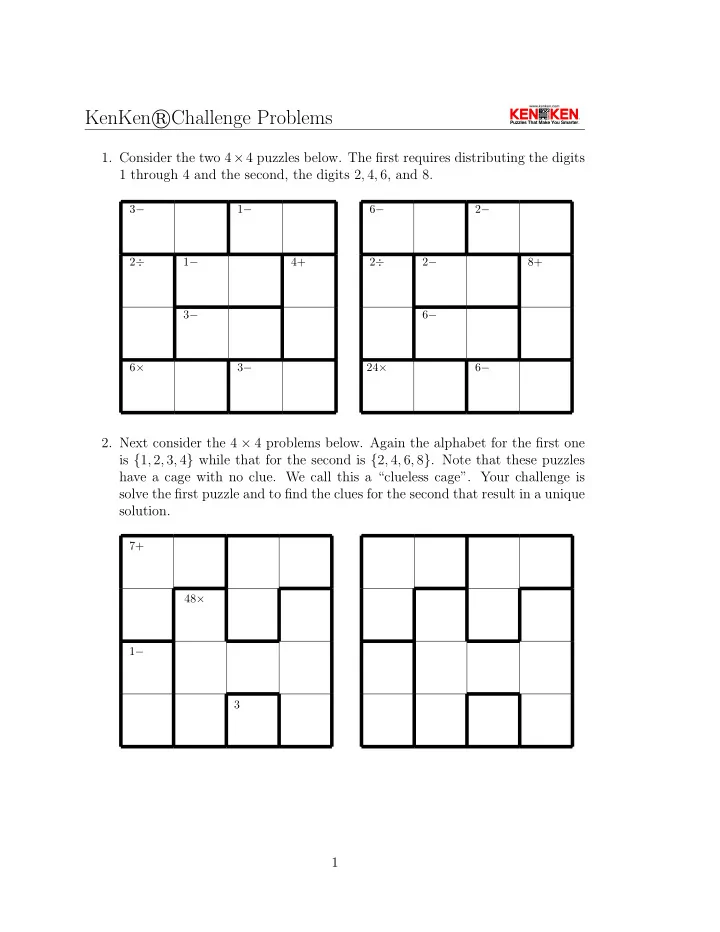

� Challenge Problems KenKen r 1. Consider the two 4 × 4 puzzles below. The first requires distributing the digits 1 through 4 and the second, the digits 2 , 4 , 6, and 8. 3 − 1 − 6 − 2 − 2 ÷ 1 − 2 ÷ 2 − 4+ 8+ 3 − 6 − 6 × 3 − 24 × 6 − 2. Next consider the 4 × 4 problems below. Again the alphabet for the first one is { 1 , 2 , 3 , 4 } while that for the second is { 2 , 4 , 6 , 8 } . Note that these puzzles have a cage with no clue. We call this a “clueless cage”. Your challenge is solve the first puzzle and to find the clues for the second that result in a unique solution. 7+ 48 × 1 − 3 1
� Challenge Problems KenKen r 3. In the standard puzzle KenKen, the numbers in each heavily outlined set of squares, called cages , must combine (in any order) to produce the target num- ber in the top corner of the cage using the mathematical operation indicated. A number can be repeated within a cage as long as it is not in the same row or column. In this 6 × 6 puzzle, the six numbers are known only to be prime numbers. In contrast to most KenKen puzzles, here you must figure out which operations produce the target numbers. Of course any cage with more than two cells must be multiplication or addition. 39 30 53 15 30 77 14 60 25 2 29 10 21 3 2
� Challenge Problems KenKen r 4. Consider the 6 × 6 KenKen fragment. Find the candidates for the 3 − cage. 2 ÷ 12 × 12 × 4 − 9+ 3 − x, y x, y 5. Backwards KenKen In this problem we start with the ‘solution’, and we try to find the cages that will produce a unique result. Here’s the distribution of digits. 4 2 3 1 1 3 4 2 2 4 1 3 3 1 2 4 Now here’s the catch. The only clues you can use are 12 × and 12+ with the exception that there can be a single one-cell cage. The puzzle must have the distribution above as the only solution. 3
� Challenge Problems KenKen r 6. Extremal KenKen Here’s a very mathematical puzzle, one that requires some ideas from elementary number theory. The puzzle is 5 × 5. 86400 × 38+ 4
Recommend
More recommend